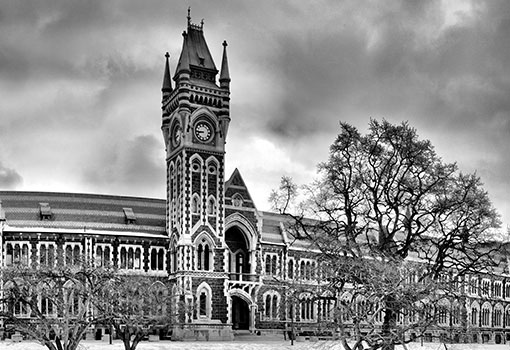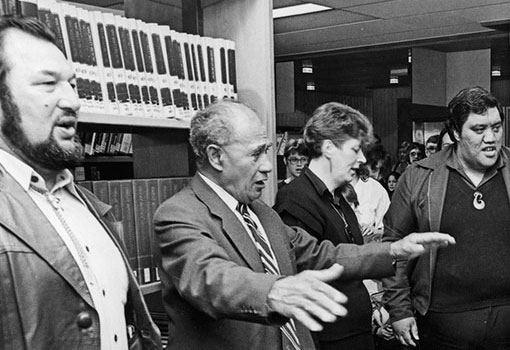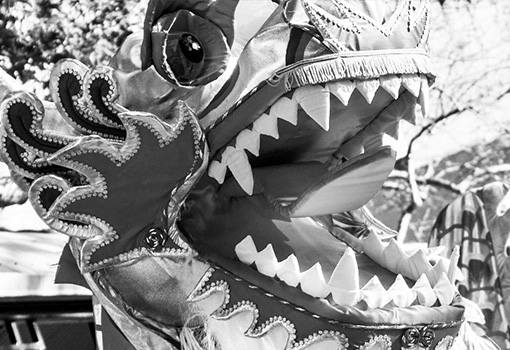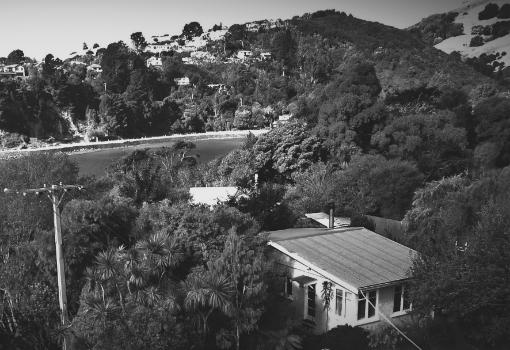Having the goods
Posted: Tuesday Aug 25, 2020
Choie Sew Hoy was one of Otago’s most prominent entrepreneurs. Raised in Guandong, China, Sew Hoy came to Dunedin in 1869, via the California and Victoria goldfields.
A visionary, he revolutionised gold dredging, exported scrap metal, glass and fungus to China and imported sought-after Chinese goods. Charming and confident, Sew Hoy was a member of the Chamber of Commerce, the Jockey Club, the Freemasons and the Caledonian Society. He supported many social causes, fought racism and helped fellow Chinese migrants.
A comprehensive new biography, Merchant, Miner, Mandarin: The Life and Times of the Remarkable Choie Sew Hoy, has been co-written by descendant Jenny Sew Hoy Agnew and her husband Trevor Agnew.
The following extract details the crucial early Dunedin commercial dealings of the man who would become one of 19th century New Zealand’s most distinguished business identities.
The opening of a new Chinese enterprise is always symbolised by the putting up of a sign.
Choie Sew Hoy was a careful man, and he considered the wording for the sign above his new store’s entrance. Chinese put their family surnames first; Europeans, last. In Australia, Choie Sew Hoy had soon become used to being addressed as Mr Sew Hoy, and this was the name he normally used in his business dealings with non-Chinese. His store signboard had "Choie Sew Hoy" in Chinese characters but simply "Sew Hoy" in English. Around the world, his descendants use either Choie (Tsui, Chui, Xu) or Sew Hoy as their surname, but they all know who their ancestor is.
The first group of customers for the Sew Hoy store arrived a few days later, when the Tararua berthed at Port Chalmers with 196 Chinese steerage passengers, the rest of the Lyttelton miners. Many, if not all, of these men would have been from Sew Hoy’s native Poon Yu County and the other Sam Yup counties. They made an immediate impression.
"Stafford-Street, Dunedin, was very busy one day last week, at Messrs Reid and Herberts, in consequence of the departure for the Tuapeka Goldfield of about 110 Chinese", wrote the Dunedin correspondent of the Naseby newspaper. Reid and Herbert, who operated a delivery and forwarding business, were able to arrange wagons and drivers, and their firm was popular with the Chinese. Reid’s office premises were at what is now No. 13, just across the road from the Sew Hoy store. The wagons were brought down from the stables further up Stafford Street, which made it easy for the miners to load up their equipment and food supplies.
The Sew Hoy dredge at work in its pond at Big Beach, on the Shotover River. The smokestack of the coal-fired boiler can be seen behind the corrugated-iron superstructure. The "gallows" winch at the bow is to raise and lower the dredge ladder. A Chinese crewman is visible on the left. PHOTO: DREDGE, 1870-1880S, OTAGO, BY BURTON BROTHERS STUDIO. TE PAPA (O.026524) (DETAIL)
Two days after landing, the Tararua men were impressing the citizens of Tokomairiro (Milton) on their way to Lawrence. "On Thursday afternoon [April 22 1869] two six-horse waggons [sic] passed through our town, heavily laden with Chinese, their stores, swags &c., on their way to Tuapeka. Throughout the day considerable numbers also passed on foot, and who attracted the attention of the small boys, as they struggled along bare-footed under the apparently heavy loads of baggage they carried along with them."
Choie Sew Hoy and his wife Eliza Prescott, c1886. PHOTO: ROBERT CLIFFORD PHOTOGRAPH, P2019-027-002, HOCKEN COLLECTIONS-UARE TAOKA O HAKENA, UNIVERSITY OF OTAGO
Using his contacts with up-country stores, Sew Hoy soon had a network of Chinese gathering scrap metal for him. A Clyde reporter was surprised to see a heap of rusty horseshoes stacked at the back of a Chinese shop. They had been gathered by two or three men and were being carefully packed in gunny sacks, to be forwarded to Dunedin, "en route for China, where old iron commands a ready sale. Throughout the gold-field the Chinamen carefully gather every scrap of iron, and sell to some of their countrymen who make a trade therein".
"Old metal" soon became a regular export from Otago, and Sew Hoy eventually had to take a yard near the wharves to store his bags of worn-out horseshoes. Nor was he the only merchant to export scrap metal. Advertisements by Chinese merchants for scrap copper, iron, zinc and lead appeared throughout the 19th century. They had found there was also a market for glass. The scrap metal trade did have its risks. When the unfortunate merchant Mee Wah, "a very quiet and harmless man", was sent to prison for three months in 1877, his offence was buying lead piping from men who had stolen it from a Dunedin Council work site.
There could be problems with pilfering. In 1880 a nine-year-old boy was prosecuted for stealing "a bagful of old iron horseshoes ... being the property of Sew Hoy, and being of the value of 6d". He was sent to the industrial school for six years. As the police inspector told the court, probably no charge would have been laid if the boy’s father had taken any steps in the matter.
"But, nothing being done, Mr Sew Hoy was forced to take proceedings, as he suffered largely from small pilfering of the kind."
Choie Sew Hoy had not only spotted a use for scrap metal; he had also found a way to turn bones into money. When the Minnie Graham sailed back to Hong Kong from Otago in June 1871 she carried 116 returning Cantonese miners and their 4234 ounces of gold. Under her hatches was a load of "iron and bones ... a considerable amount of old metals". Canton’s carvers could produce handsome carvings from beef bones, while shin bones were used to make mah jong sets for people who could not afford ivory.
The Rev Alexander Don with Chinese gold miners at the Kyeburn diggings in Otago. PHOTO: PHOTOGRAPHER UNIDENTIFIED. REF: F-19156-1/2. MCNEUR COLLECTION, ALEXANDER TURNBULL LIBRARY
Chew Chong has always been recognised as the man who first spotted that the woodear fungus (Auricularia cornea) growing on trees in the New Zealand bush was the same mushroom-like fungus, muk yee, prized as a delicacy in Chinese cuisine. He did indeed make that connection, and he saved the economy of Taranaki as a result, but it seems that he was not the first. Choie Sew Hoy is usually credited with doing the early marketing of the fungus for Chew Chong. Bags of the dried fungus were sent from Taranaki to Sew Hoy’s Dunedin store, where the fungus was sorted, packed and sent out to Chinese buyers in Melbourne, San Francisco and Hong Kong. During 1873 alone, Chew Chong forwarded at least 38 bales of Taranaki fungus to Sew Hoy for export to overseas markets.
Sew Hoy purchased a wool press and set it up in the store, beside the scales. The men could place the sacking inside the press, fill it with the appropriate amount of fungus, and then pack the contents down tight, before sewing up the bale, ready for export. In February 1882, the Reverend Alexander Don, a Presbyterian minister then at the beginning of his mission to the Chinese in New Zealand, popped in to wish Sew Hoy the compliments of the Chinese New Year, and leave his visiting card, which was added to hundreds stuck to the wall. Don was impressed to see "eight workmen weighing bales of muk yee from Wellington". Nor did Sew Hoy simply wait on supplies to arrive from Taranaki; he advertised for fungus in such likely areas as Nelson and Whanganui.
Choie Sew Hoy, merchant, miner and mandarin, pictured here in a Burton Brothers photograph. PHOTO: BURTON BROTHERS STUDIO, JON JUDSON
European observers were bemused by the fungus. One local Otago paper described it as a "peculiar, dry-looking article". According to the Tuapeka Times, the Chinese, "by some mysterious process", made the fungus "into an article of food, no doubt palatable enough to them, but which would, I anticipate, be quickly rejected by fastidious European stomachs". If the reporter had bothered to ask, he would have found that the only process involved was that the fungus-gatherers laid it out to dry in the sun. Europeans and Maori, who asked about the uses of the fungus they were gathering in the bush, seem to have been teased by their Chinese informants, who suggested it was anything from a medicine, "a decoction to purify the blood", to a key ingredient of joss sticks.
In the early 1880s, William Blair, a leading public works engineer, who had paused from overseeing railway construction in Otago and Southland to write an account of New Zealand's industries, asked Sew Hoy what the dried fungus was used for and was relieved to learn that "it was used in soups as ordinary food; but Mr Sew Hoy informs me that it is chiefly used as a dye. The exports during the past ten years [1872 to 1882] have grown from £1,927 to £18,939". Blair described fungus gathering as a vagabond industry but it was a profitable one, both for the hard-pressed farmers and their families who did the gathering, and for the Chinese merchants who marketed it. Between 1872 and 1941, New Zealand exported about 25,000,000 kilograms of fungus, with a sterling value of over £643,000.
The sign that hung outside the Choie Sew Hoy store in Stafford Street, with his name in Chinese characters. PHOTO: SEW HOY FAMILY COLLECTION, TOITU-OTAGO SETTLERS MUSEUM
Thanks to a mishap in a delivery of opium, some evidence survives of how Choie Sew Hoy and his shopkeeper clients worked together. Despite the initial hostility, Chinese miners had managed to take out claims in some of the gullies around Hogburn (Naseby) and had established not one but two camps there, both with shops. In July 1870, one of the Naseby shopkeepers, known as See Long, who was probably Sam Yup in origin, had ordered some opium from Sew Hoy’s store. It never arrived and the matter finished up in the magistrates court in Dunedin two months later, with See Long making a claim against Cobb & Co.’s Telegraph Line of Royal Mail Coaches, or rather the company's current proprietor, John Chaplin. Choie Sew Hoy was their first witness, and he was sworn "in the Chinese fashion, by blowing out a match". Interestingly, he chose to use Cantonese rather than English. This was the first time he had spoken in public to a group of non-Chinese in Otago and he was clearly taking no chances of being misunderstood. The court interpreter was a Dunedin Chinese agent, Quan Hay, who had good English; he sometimes worked in a Chinese shop at Arrowtown.
Sew Hoy told how, in July 1870, he had received a letter from See Long, ordering 15 pounds (6.8 kilograms) of opium. Sew Hoy took the package down to the Cobb & Co. booking office at the corner of Stafford and Princes streets and paid 15s for it to be delivered to the Naseby coach office, which was located in the Royal Hotel, still standing in Earne Street. See Long’s evidence was that when he went to the office after the coach had arrived, the agent told him there had been no parcel for him. The reporting of Sew Hoy’s evidence suggests that when he heard of this "he then went up the country in search of it, but had not got it". Sew Hoy did, however, still have the memorandum (or receipt) from Cobb & Co. This gave See Long the evidence he needed to make a claim for the value of the opium in Naseby, which was £51.
Sew Hoy’s ever-fertile mind was always looking for clever ways of expanding his range of stock and diversifying his customer base. Instead of relying solely on a small pool of Chinese customers, he decided to import Chinese-made goods that would appeal to the wider Otago population.
Merchant, Miner, Mandarin: The Life and Times of the Remarkable Choie Sew Hoy, by Jenny Sew Hoy Agnew and Trevor Agnew, Canterbury University Press, August, 2020, RRP$49.99.
When the 871-ton, iron-hulled sailing ship Portland arrived in Otago on 7 May 1875, bringing 287 Cantonese passengers, she also carried a large shipment of furniture, such as sofas, writing desks and armchairs. Made by skilled craftsmen and cabinetmakers in Guangdong and Hong Kong, they were to be sold to the prosperous European settlers of Otago. Over a period of months, several large shipments of similar furniture arrived, including cradles, chairs and picnic baskets. Because the Kum Goon Lee and Sew Hoy companies lacked the space to display more than a fraction of this vast range of furniture, they commissioned local auctioneers, McLandress, Hepburn & Co., to sell it in their auction rooms in Manse Street, just around the corner from Sew Hoy’s store. Other items put on sale were Chinese silks and ornamental china bowls and basins. The success of these auctions confirmed Sew Hoy’s belief that Otago citizens were willing to buy some of the products of Cantonese industry. In the years ahead, he would begin selling these items from his store. Always forward-looking, Sew Hoy took the unprecedented step of publishing newspaper advertisements for his store, drawing attention to high quality products from Cantonese workshops. His first, on the front page of the Otago Daily Times on February 25, 1882, offered "Finest Chinese SILKS, suitable for ladies’ dresses. Cane Chairs and Fancy Goods". In 1885, describing himself as "IMPORTER of Chinese Silks in all colours", Sew Hoy offered Dunedin residents a range of "Ladies’ and Gents’ Silk Handkerchiefs of the latest designs AND most seasonable shades, direct from the Canton Factory". The store also had shawls and sashes on sale, as well as a variety of Chinese silks, including wedding dress pieces. The store could supply not only tea in caddies, boxes and half-chests but also best quality China teapots and cosies, "which keep the tea hot for four hours".



